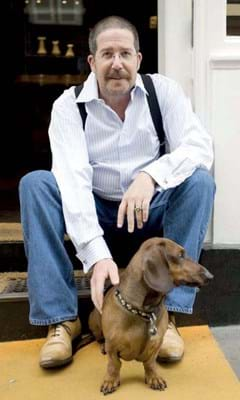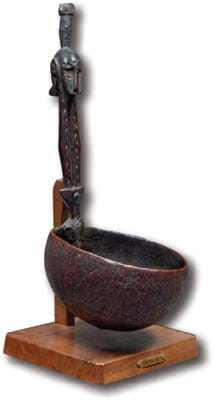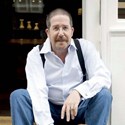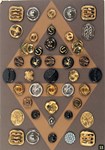Not only is he participating in the Parcours des Mondes and La Biennale Paris, which run concurrently, but he is also a dealer member of the commission that organises the latter event. ATG asked him about his strategy for doing so many things at one time and what he thinks about the future of the Paris art market on the world stage.
How do you manage to juggle two major events at the same time?
Juggling the two events concurrently may seem daunting to some but it is actually the fruit of calm, careful consideration and thoughtful organisation.
The reasons for doing both are quite obvious, as the two fairs – while coinciding date-wise – do not relate clientele-wise. The Parcours du Monde is a relatively self-contained fair in the specific, though wide-ranging field of tribal art, which after some 17 years is still going strong.
However, as it is field-specific it has remained difficult to bring in new clients from cross-over areas such as modern and contemporary art. The Parcours has opened its doors to Asian art and antiquities, which is a smart move and well appreciated.
On the other front, the Biennale is light on tribal art and always has been, with never more than perhaps four or five exhibitors present at any given year – and for a while now, less than that. I do not go to the Biennale looking for confirmed tribal clients – I look to make new clients from among the collectors of other areas.
The Biennale attracts the high-net-worth clients in many fields such as fine furniture, antiquities, modern art and jewellery. These collectors can easily become interested in tribal art and turn hopefully into new clients. This is a policy I have implemented since the late 1980s and ‘90s when I first exhibited at various fairs.
Subsequently I have exhibited in the world’s greatest art and antique fairs such as TEFAF Maastricht and New York, Frieze Masters in London and the Biennale in Paris.
These are the fairs where dealers can compete with the auction houses – meeting the buyers of all types of art at the highest levels. So, regardless of the stress and cost of doing these fairs, the return on the investment in the long run is excellent.
How do you decide what to exhibit in each venue – and is there any visitor crossover?
Deciding what to exhibit is an interesting endeavour. This year it was easy, as I have long wanted to do my Nuts! show and will be exhibiting a collection of coconut-related objects in the gallery for Parcours des Mondes.
To make things a bit easier I offered to share my gallery with the Kevorkian Gallery, as we are both doing the Biennale at the same time and it is their first Parcours des Mondes. Their gallery is near to, but just outside, the Parcours geographic area.
The selection process for the Biennale is quite natural in so much that one has to provide works of the highest quality and diversity.
The fact that most visitors to the Biennale are not regulars to the gallery allows me to offer a mix of pieces: new acquisitions and discoveries, as well as some that are not fresh to the market but are of superb quality.
Is early September becoming a key period in the French art market calendar, with a greater trend for auction houses, dealers and fair organisers to promote this as the time to visit Paris?
Frankly, I think September, especially the first three weeks, is way too early to host a fair like the Biennale. We are stuck in early September due to the scheduling at the Grand Palais. Hopefully in the near future we can find another period.
September, however, is essential for the Parcours des Mondes as we have to rent the modern and contemporary galleries in the Saint-Germain-des-Près area for the guest exhibitors. This is only possible in early September as the Mod/Contemporary season begins really in early October.
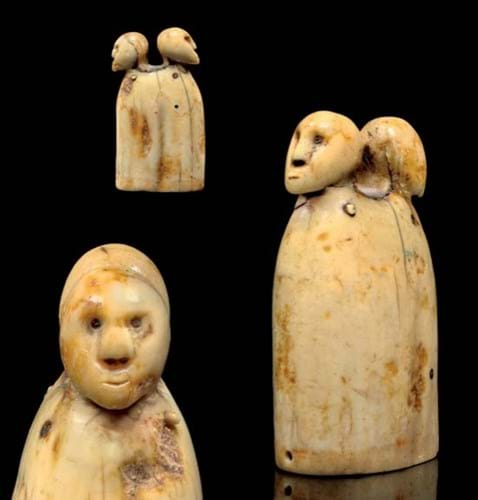
Multiple views of a rarity that Meyer is taking to the Biennale – an Eskimo tinder box made from the hollow root of a walrus tusk. It dates from the Thule Period (18th-19th century) and is equipped with a much older walrus ivory cap from the Punuk Period (600-900AD). It was collected by David McFall, whaleboat steerer aboard the bark Java from 1867-68.
Is Paris still special on an increasingly busy art world stage?
Paris is a unique city in the art world. It is the only one with such a high concentration of art and cultural business-related venues. I reckon that there are some 2500 dealerships in Paris, not counting the fleamarkets.
The overall quality for general antiques, antiquities, tribal art, design, Art Deco and Nouveau, modern and contemporary, photography, jewellery, Asian and so on is exceedingly high. Any area of the city has shops, galleries, flea-markets… art is available for everyone, at all prices and in all collecting areas.
The Biennale is there to help anchor and display this unique quality of the city and of France as a whole, because the provinces are full of good dealers and great art as well. Like all countries, we have some issues with art-related legislation, but overall the Syndicat National des Antiquaires and our colleague organisations are hard at work smoothing things out.
We need better representation at government and municipal levels and legislators should take notice of the financial importance of the French art market, which employs thousands of people directly and indirectly and brings in foreign investment.


